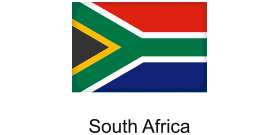 South Africa Records Decline in Rhino Poaching for 2024, but Challenges Persist
South Africa Records Decline in Rhino Poaching for 2024, but Challenges Persist
South Africa has reported a significant decline in rhino poaching incidents for 2024, with a total of 420 rhinos killed across the country compared to 499 in 2023. This marks a positive step in the ongoing battle against wildlife crime, but challenges remain, particularly in key regions like KwaZulu-Natal and the Kruger National Park.
KwaZulu-Natal: A Mixed Picture
KwaZulu-Natal (KZN) remained the hardest-hit province, with 232 rhinos poached in 2024. However, this figure represents a notable decline from the 325 rhinos killed in the region in 2023. A major contributor to this reduction was the Ezemvelo KZN Wildlife Dehorning Programme, implemented in Hluhluwe-iMfolozi Park between April and October 2024. Funded by the World Wide Fund for Nature (WWF), the program had an immediate impact, reducing poaching numbers from 35 in April to fewer than 10 per month between May and September.
Despite these successes, poaching syndicates adapted their tactics in October, targeting dehorned rhinos and causing a sudden surge in incidents. That month alone, KZN lost 27 rhinos. Swift action by the provincial anti-poaching team intercepted the new syndicate, preventing further losses. Over the eight-month period, KZN recorded a 67% decline in poaching incidents, showcasing the effectiveness of targeted interventions.
Kruger National Park: A Concerning Trend
While KZN saw improvements, the Kruger National Park, one of South Africa’s most iconic wildlife reserves, experienced an increase in poaching activity. A total of 88 rhinos were poached in 2024, up from 78 in 2023. The escalation was particularly sharp in December, when 21 rhinos were killed, bringing the year-end total to 88. The trend continued into January 2025, with another 17 rhinos reported poached. This surge highlights the ongoing challenges in protecting rhinos in one of the country’s largest and most vulnerable reserves.
State vs. Private Reserves
Of the 420 rhinos poached in 2024, 320 were killed on state-owned properties, while 100 were poached on privately owned parks, reserves, or farms. This disparity underscores the need for enhanced security measures on state-owned land, where the majority of incidents occur. Private reserves, which often have more resources for anti-poaching efforts, continue to play a critical role in safeguarding South Africa’s rhino population.
Anti-Poaching Efforts and Challenges
South Africa’s fight against rhino poaching is multifaceted, involving dehorning programs, increased surveillance, and collaboration with international organizations. The success of the Ezemvelo KZN Wildlife Dehorning Programme demonstrates the potential of targeted interventions to reduce poaching. However, the adaptability of poaching syndicates remains a significant challenge. As seen in KZN, syndicates quickly shifted their focus to dehorned rhinos, highlighting the need for continuous innovation in anti-poaching strategies.
In the Kruger National Park, the December surge in poaching activity underscores the importance of bolstering security measures during high-risk periods. Enhanced monitoring, increased ranger patrols, and the use of technology such as drones and thermal imaging cameras could help address these challenges.
